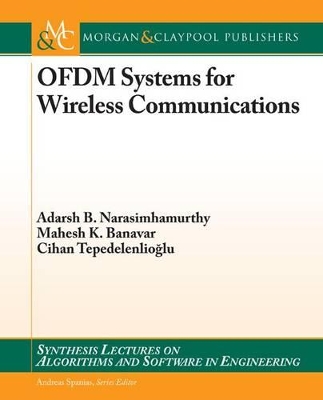Synthesis Lectures on Algorithms and Software in Engineering
1 total work
Ofdm Systems for Wireless Communications
by Adarsh Narasimhamurthy, Mahesh Banavar, and Cihan Tepedelenliouglu
Published 2 February 2010
Orthogonal Frequency Division Multiplexing (OFDM) systems are widely used in the standards for digital audio/video broadcasting, WiFi and WiMax. Being a frequency-domain approach to communications, OFDM has important advantages in dealing with the frequency-selective nature of high data rate wireless communication channels. As the needs for operating with higher data rates become more pressing, OFDM systems have emerged as an effective physical-layer solution.
This short monograph is intended as a tutorial which highlights the deleterious aspects of the wireless channel and presents why OFDM is a good choice as a modulation that can transmit at high data rates. The system-level approach we shall pursue will also point out the disadvantages of OFDM systems especially in the context of peak to average ratio, and carrier frequency synchronization. Finally, simulation of OFDM systems will be given due prominence. Simple MATLAB programs are provided for bit error rate simulation using a discrete-time OFDM representation. Software is also provided to simulate the effects of inter-block-interference, inter-carrier-interference and signal clipping on the error rate performance. Different components of the OFDM system are described, and detailed implementation notes are provided for the programs.
This short monograph is intended as a tutorial which highlights the deleterious aspects of the wireless channel and presents why OFDM is a good choice as a modulation that can transmit at high data rates. The system-level approach we shall pursue will also point out the disadvantages of OFDM systems especially in the context of peak to average ratio, and carrier frequency synchronization. Finally, simulation of OFDM systems will be given due prominence. Simple MATLAB programs are provided for bit error rate simulation using a discrete-time OFDM representation. Software is also provided to simulate the effects of inter-block-interference, inter-carrier-interference and signal clipping on the error rate performance. Different components of the OFDM system are described, and detailed implementation notes are provided for the programs.
